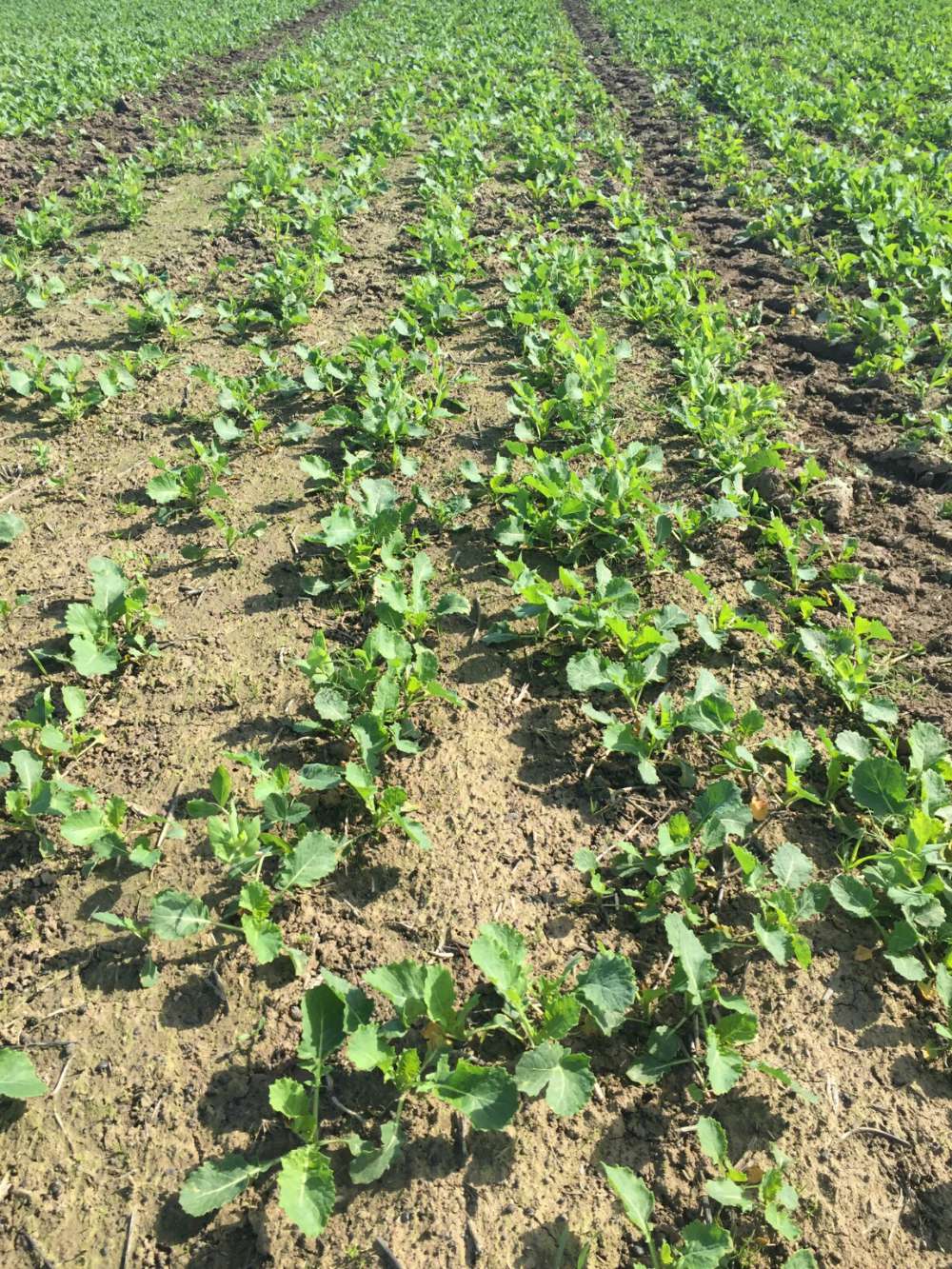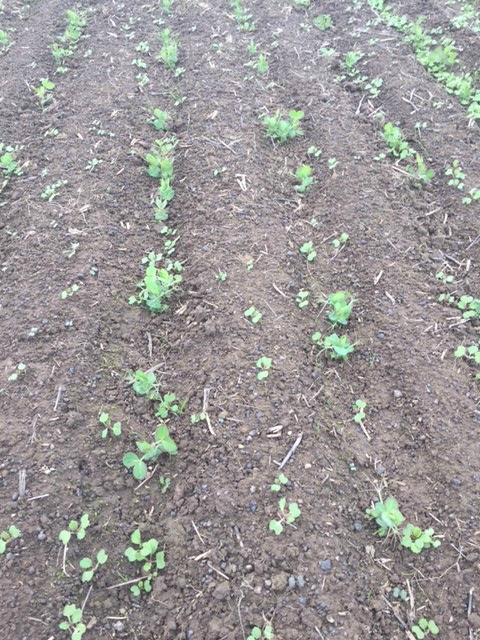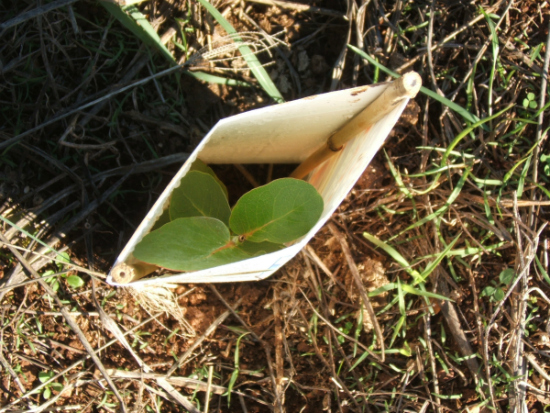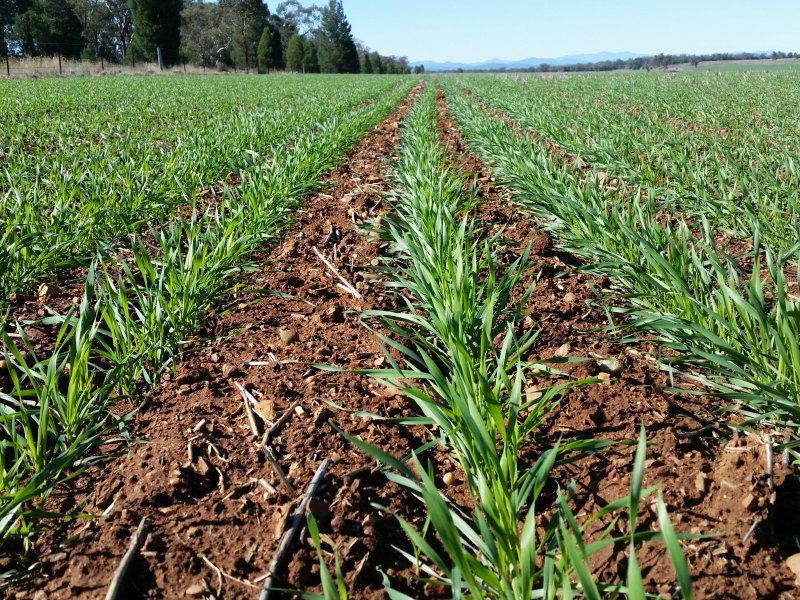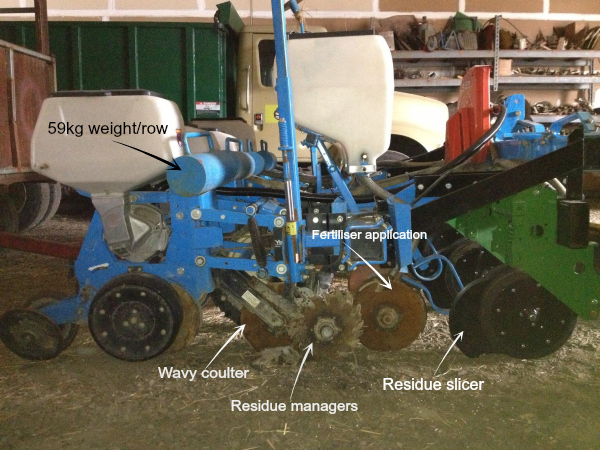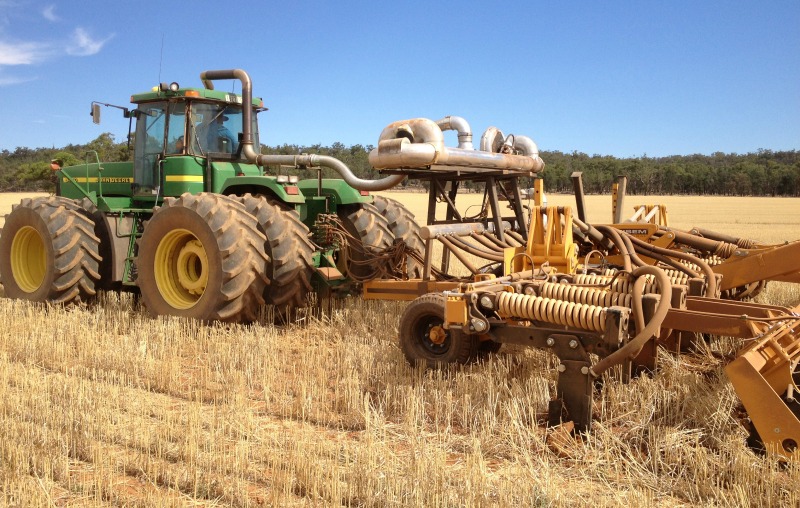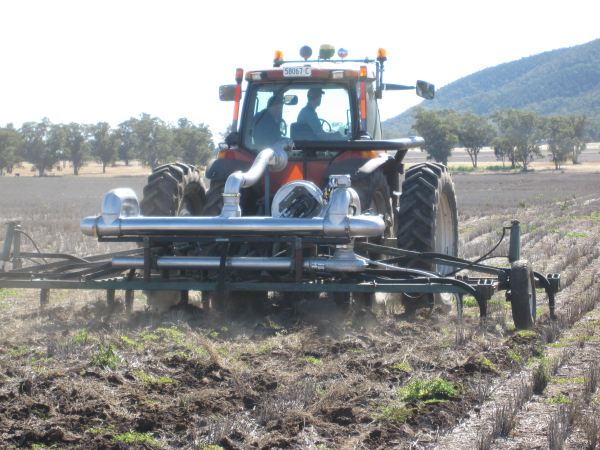A quandary of many grain farmers is knowing that the rotation to a pulse crop is a good thing for the soil and farming system, but that this choice has often come with an increased risk associated with these crops. This is when some farmers decide to be innovative to solve such problems – as is the case with Nick Shady on his farm near Lismore in Victoria, Australia (West of Melbourne). Nick has moved to low rates of liquid fertilizer and has begun to experiment by combining a pulse crop with another of his grain crops.
This has led Nick to discover the world of companion cropping or intercropping, with his crop that he aptly calls ‘Peaola’ (a mix of field peas and canola). His ideas developed after he planted a field pea crop quite late (as planting was delayed due to wet weather); in a season that rapidly turned dry. The crop that resulted was not worth harvesting, but was rather treated as a brown manure crop and then worked into the soil prior to summer for the associated advantages. Continue reading “INTERCROPPING – A Winter Crop Example” »

